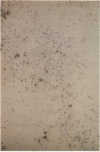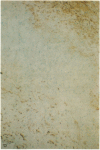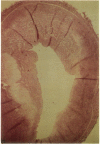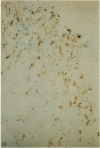Abstract
Lipoprotein lipase (LPL), hydrolyzes the core triglycerides of lipoproteins, thereby playing a role in their maturation. LPL may be important in the metabolic pathways that lead to atherosclerosis, since it is secreted in vitro by both of the predominant cell types of the atherosclerotic plaque, i.e., macrophages and smooth muscle cells. Because of uncertainty concerning the primary cellular source of LPL in atherosclerotic lesions, in situ hybridization assays for LPL mRNA were performed on 12 coronary arteries obtained from six cardiac allograft recipients. Macrophages and smooth muscle cells were identified on adjacent sections with cell-specific antibodies and foam cells were identified morphologically. LPL protein was localized using a polyclonal antibody. LPL mRNA was produced by a proportion of plaque macrophages, particularly macrophage-derived foam cells, but was not detected in association with any intimal or medial smooth muscle cells. These findings were confirmed by combined immunocytochemistry and in situ hybridization on the same tissue sections. LPL protein was detected in association with macrophage-derived foam cells, endothelial cells, adventitial adipocytes, and medial smooth muscle cells, and, to a lesser extent, in intimal smooth muscle cells and media underlying well-developed plaque. These results indicate that macrophage-derived foam cells are the primary source of LPL in atherosclerotic plaques and are consistent with a role for LPL in the pathogenesis of atherosclerosis.
Full text
PDF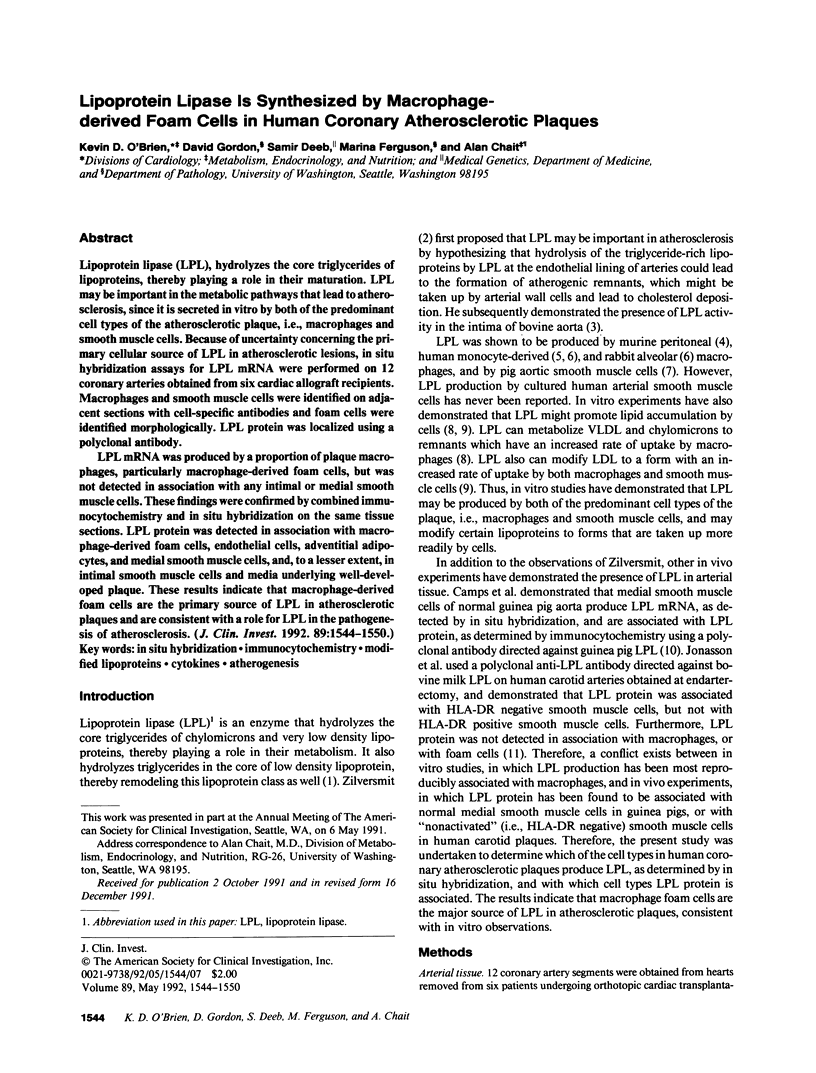
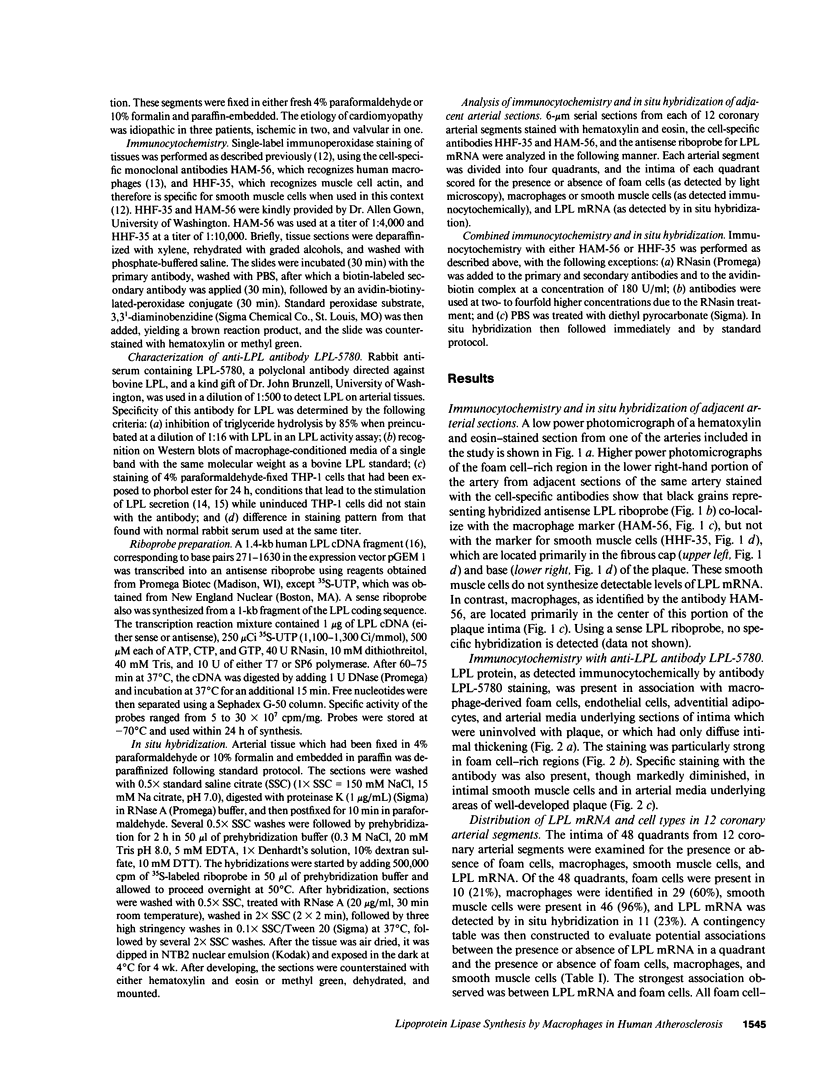
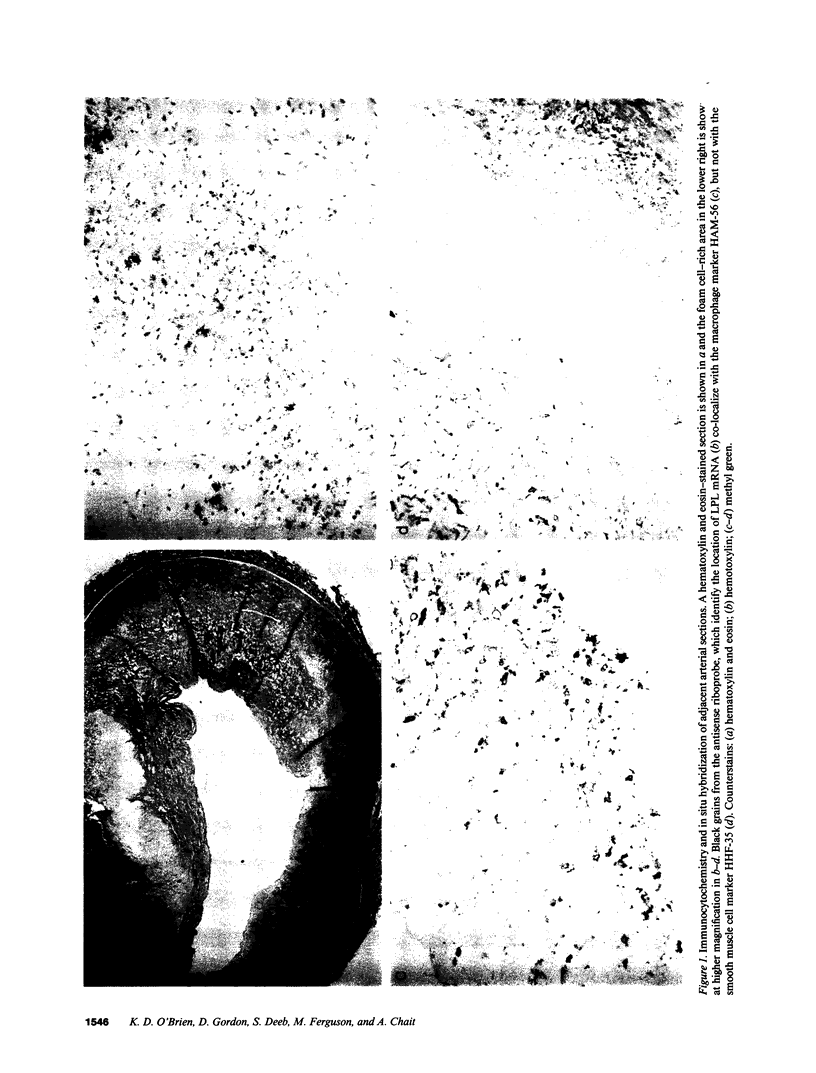
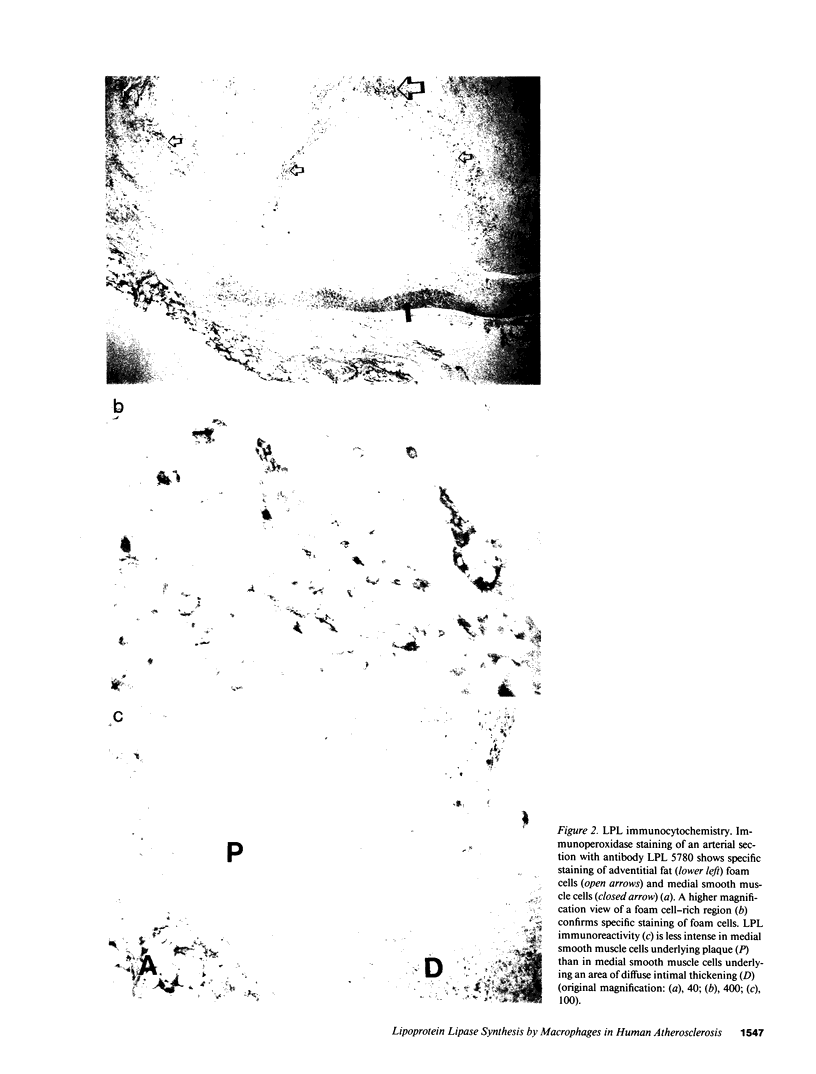
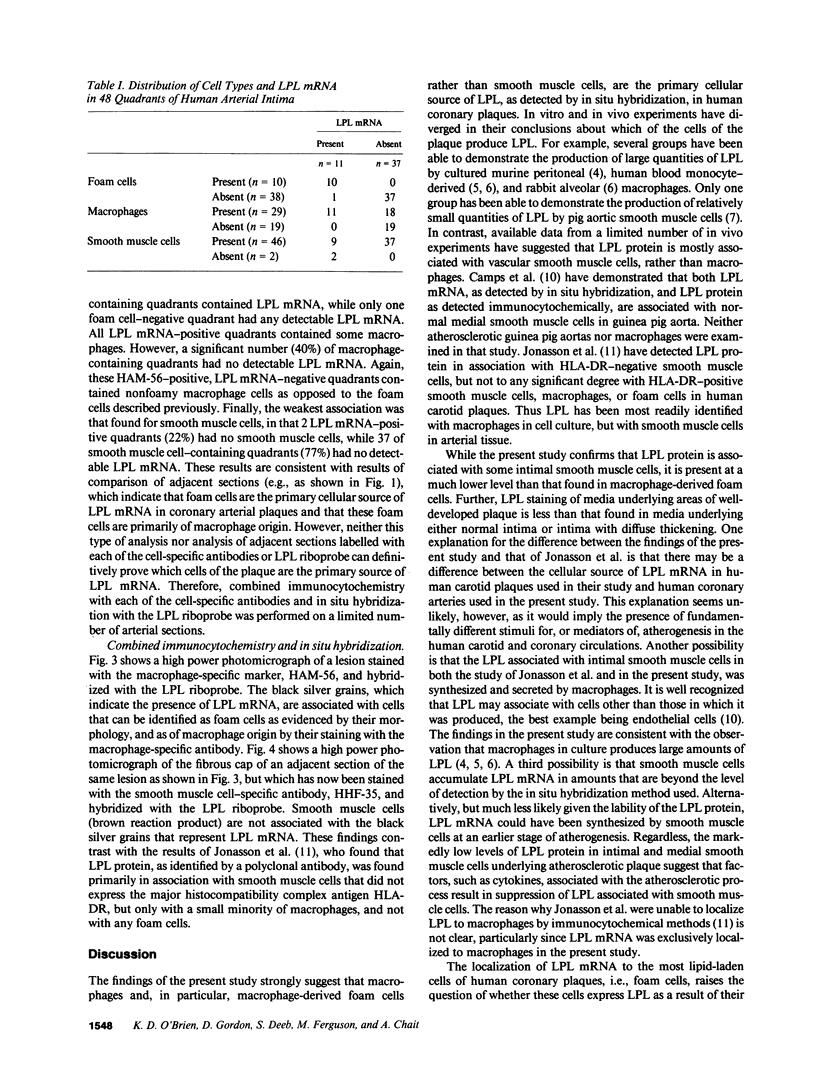
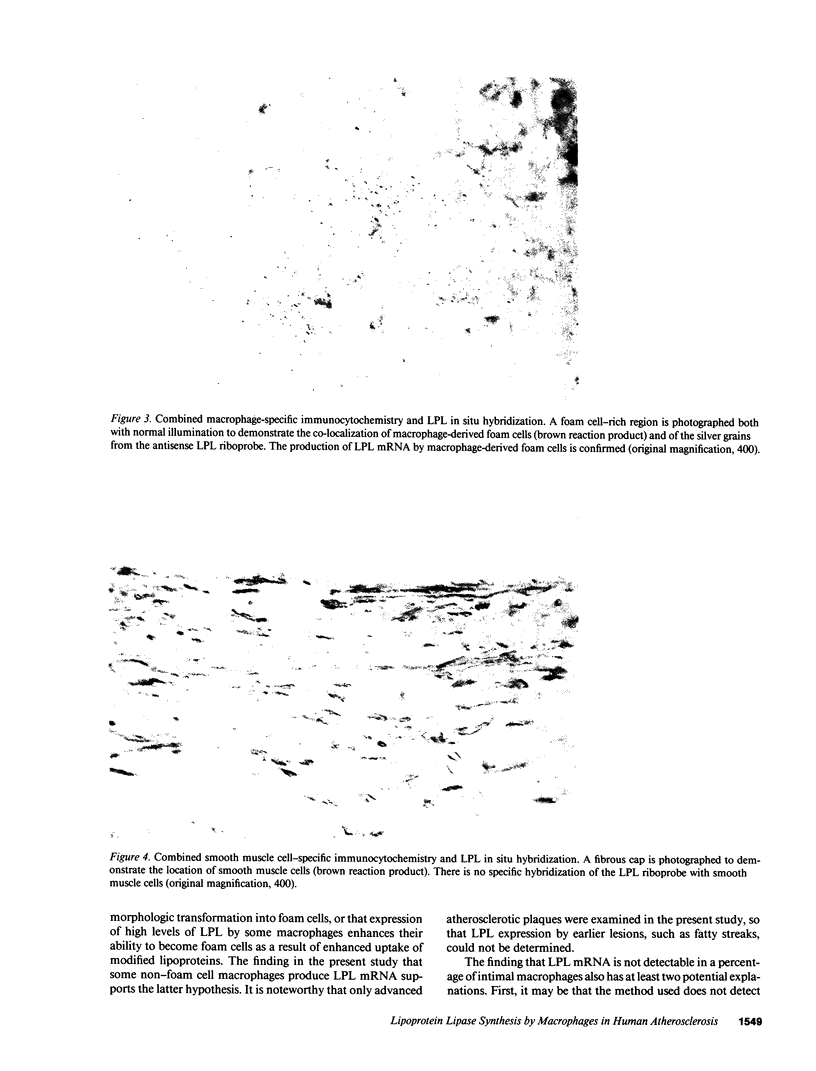
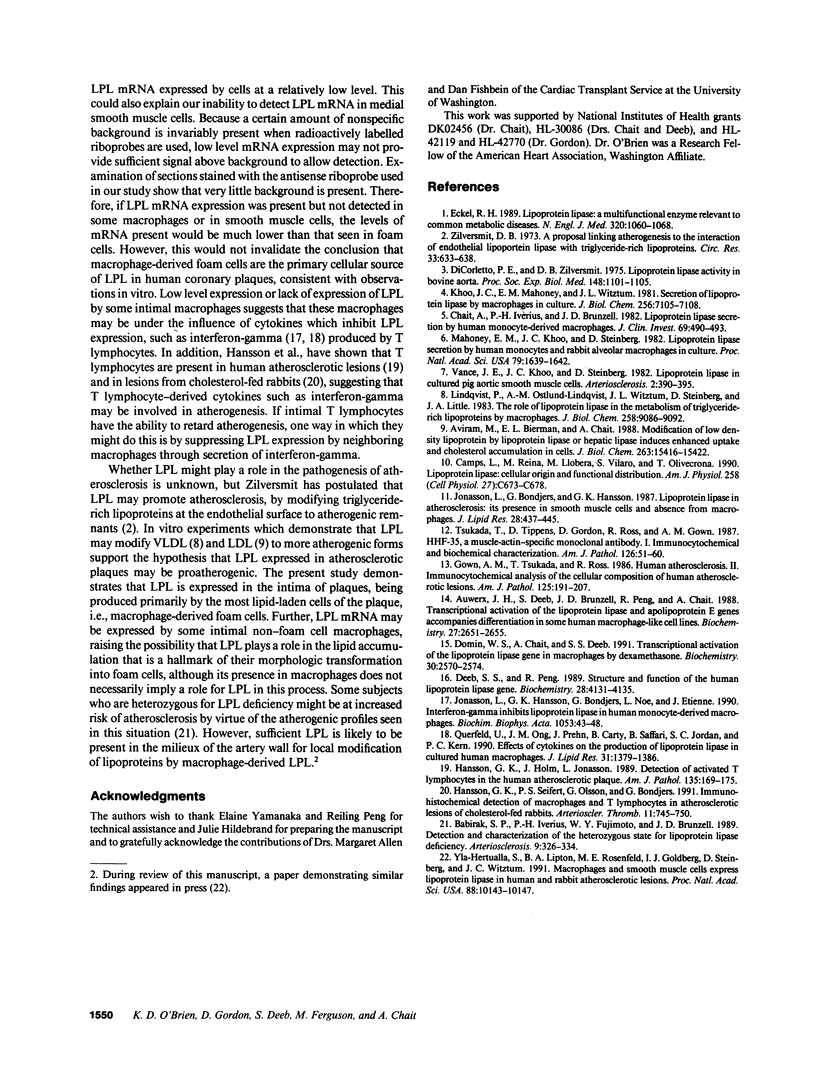
Images in this article
Selected References
These references are in PubMed. This may not be the complete list of references from this article.
- Auwerx J. H., Deeb S., Brunzell J. D., Peng R., Chait A. Transcriptional activation of the lipoprotein lipase and apolipoprotein E genes accompanies differentiation in some human macrophage-like cell lines. Biochemistry. 1988 Apr 19;27(8):2651–2655. doi: 10.1021/bi00408a003. [DOI] [PubMed] [Google Scholar]
- Aviram M., Bierman E. L., Chait A. Modification of low density lipoprotein by lipoprotein lipase or hepatic lipase induces enhanced uptake and cholesterol accumulation in cells. J Biol Chem. 1988 Oct 25;263(30):15416–15422. [PubMed] [Google Scholar]
- Babirak S. P., Iverius P. H., Fujimoto W. Y., Brunzell J. D. Detection and characterization of the heterozygote state for lipoprotein lipase deficiency. Arteriosclerosis. 1989 May-Jun;9(3):326–334. doi: 10.1161/01.atv.9.3.326. [DOI] [PubMed] [Google Scholar]
- Camps L., Reina M., Llobera M., Vilaró S., Olivecrona T. Lipoprotein lipase: cellular origin and functional distribution. Am J Physiol. 1990 Apr;258(4 Pt 1):C673–C681. doi: 10.1152/ajpcell.1990.258.4.C673. [DOI] [PubMed] [Google Scholar]
- Chait A., Iverius P. H., Brunzell J. D. Lipoprotein lipase secretion by human monocyte-derived macrophages. J Clin Invest. 1982 Feb;69(2):490–493. doi: 10.1172/JCI110473. [DOI] [PMC free article] [PubMed] [Google Scholar]
- Deeb S. S., Peng R. L. Structure of the human lipoprotein lipase gene. Biochemistry. 1989 May 16;28(10):4131–4135. doi: 10.1021/bi00436a001. [DOI] [PubMed] [Google Scholar]
- Dicorleto P. E., Zilversmit D. B. Lipoprotein lipase activity in bovine aorta. Proc Soc Exp Biol Med. 1975 Apr;148(4):1101–1105. doi: 10.3181/00379727-148-38696. [DOI] [PubMed] [Google Scholar]
- Domin W. S., Chait A., Deeb S. S. Transcriptional activation of the lipoprotein lipase gene in macrophages by dexamethasone. Biochemistry. 1991 Mar 12;30(10):2570–2574. doi: 10.1021/bi00224a002. [DOI] [PubMed] [Google Scholar]
- Eckel R. H. Lipoprotein lipase. A multifunctional enzyme relevant to common metabolic diseases. N Engl J Med. 1989 Apr 20;320(16):1060–1068. doi: 10.1056/NEJM198904203201607. [DOI] [PubMed] [Google Scholar]
- Gown A. M., Tsukada T., Ross R. Human atherosclerosis. II. Immunocytochemical analysis of the cellular composition of human atherosclerotic lesions. Am J Pathol. 1986 Oct;125(1):191–207. [PMC free article] [PubMed] [Google Scholar]
- Hansson G. K., Holm J., Jonasson L. Detection of activated T lymphocytes in the human atherosclerotic plaque. Am J Pathol. 1989 Jul;135(1):169–175. [PMC free article] [PubMed] [Google Scholar]
- Hansson G. K., Seifert P. S., Olsson G., Bondjers G. Immunohistochemical detection of macrophages and T lymphocytes in atherosclerotic lesions of cholesterol-fed rabbits. Arterioscler Thromb. 1991 May-Jun;11(3):745–750. doi: 10.1161/01.atv.11.3.745. [DOI] [PubMed] [Google Scholar]
- Jonasson L., Bondjers G., Hansson G. K. Lipoprotein lipase in atherosclerosis: its presence in smooth muscle cells and absence from macrophages. J Lipid Res. 1987 Apr;28(4):437–445. [PubMed] [Google Scholar]
- Jonasson L., Hansson G. K., Bondjers G., Noe L., Etienne J. Interferon-gamma inhibits lipoprotein lipase in human monocyte-derived macrophages. Biochim Biophys Acta. 1990 Jun 12;1053(1):43–48. doi: 10.1016/0167-4889(90)90024-8. [DOI] [PubMed] [Google Scholar]
- Khoo J. C., Mahoney E. M., Witztum J. L. Secretion of lipoprotein lipase by macrophages in culture. J Biol Chem. 1981 Jul 25;256(14):7105–7108. [PubMed] [Google Scholar]
- Lindqvist P., Ostlund-Lindqvist A. M., Witztum J. L., Steinberg D., Little J. A. The role of lipoprotein lipase in the metabolism of triglyceride-rich lipoproteins by macrophages. J Biol Chem. 1983 Aug 10;258(15):9086–9092. [PubMed] [Google Scholar]
- Mahoney E. M., Khoo J. C., Steinberg D. Lipoprotein lipase secretion by human monocytes and rabbit alveolar macrophages in culture. Proc Natl Acad Sci U S A. 1982 Mar;79(5):1639–1642. doi: 10.1073/pnas.79.5.1639. [DOI] [PMC free article] [PubMed] [Google Scholar]
- Querfeld U., Ong J. M., Prehn J., Carty J., Saffari B., Jordan S. C., Kern P. A. Effects of cytokines on the production of lipoprotein lipase in cultured human macrophages. J Lipid Res. 1990 Aug;31(8):1379–1386. [PubMed] [Google Scholar]
- Tsukada T., Tippens D., Gordon D., Ross R., Gown A. M. HHF35, a muscle-actin-specific monoclonal antibody. I. Immunocytochemical and biochemical characterization. Am J Pathol. 1987 Jan;126(1):51–60. [PMC free article] [PubMed] [Google Scholar]
- Vance J. E., Khoo J. C., Steinberg D. Lipoprotein lipase in cultured pig aortic smooth muscle cells. Arteriosclerosis. 1982 Sep-Oct;2(5):390–395. doi: 10.1161/01.atv.2.5.390. [DOI] [PubMed] [Google Scholar]
- Ylä-Herttuala S., Lipton B. A., Rosenfeld M. E., Goldberg I. J., Steinberg D., Witztum J. L. Macrophages and smooth muscle cells express lipoprotein lipase in human and rabbit atherosclerotic lesions. Proc Natl Acad Sci U S A. 1991 Nov 15;88(22):10143–10147. doi: 10.1073/pnas.88.22.10143. [DOI] [PMC free article] [PubMed] [Google Scholar]
- Zilversmit D. B. A proposal linking atherogenesis to the interaction of endothelial lipoprotein lipase with triglyceride-rich lipoproteins. Circ Res. 1973 Dec;33(6):633–638. doi: 10.1161/01.res.33.6.633. [DOI] [PubMed] [Google Scholar]



